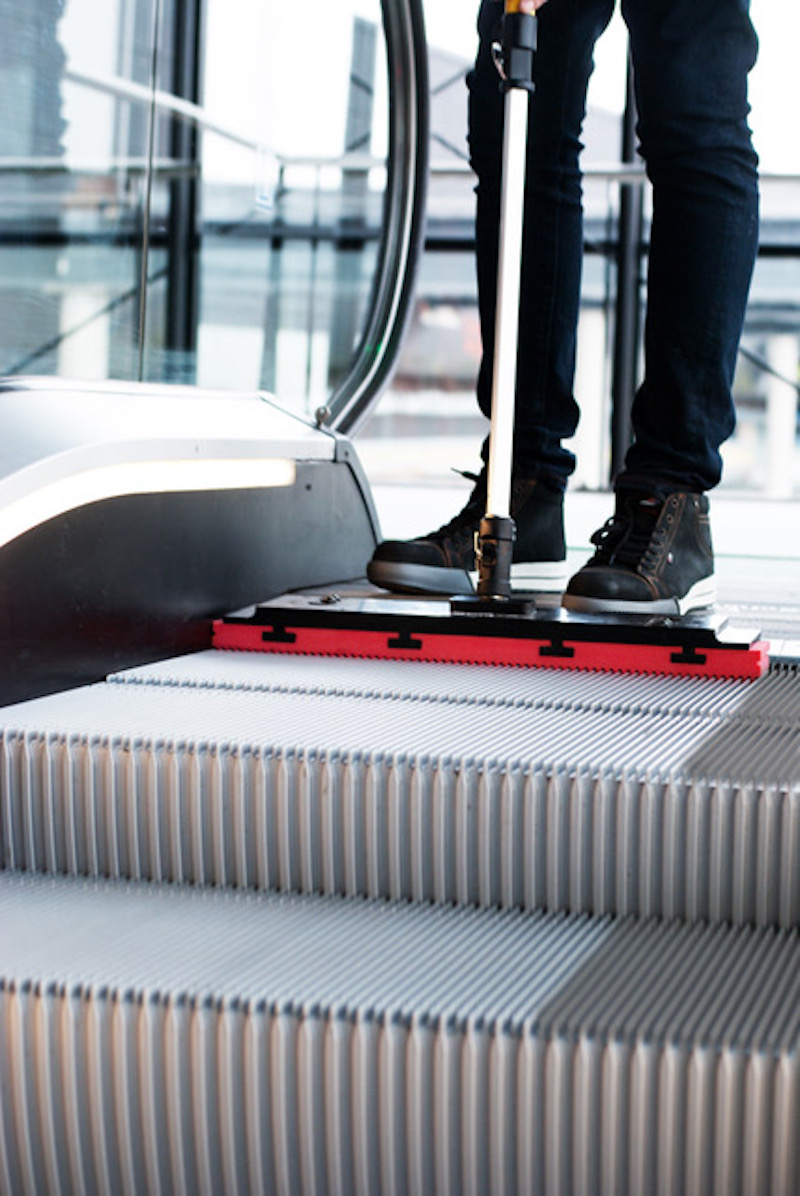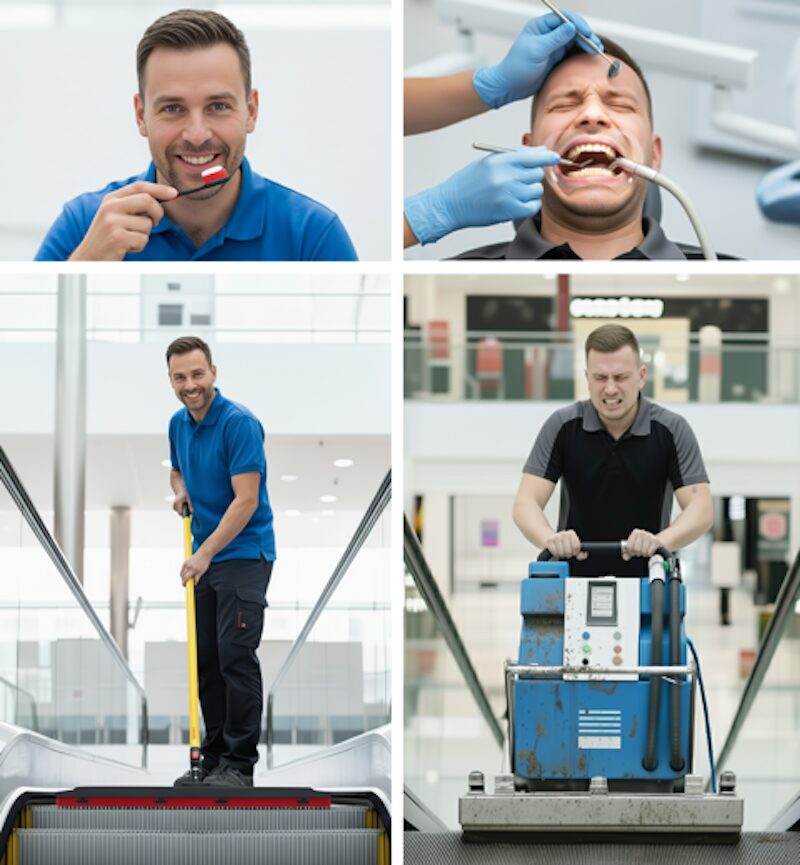Escalators carry millions of people each day through airports, shopping centers, hotels, and transit hubs. Beyond being the most trafficked flooring area, they are also the most expensive and one of the most prone to slip-and-fall hazards. Yet, they are rarely cleaned at even a fraction of the frequency of the less trafficked and less expensive flooring that leads up to and away from them. This is because most facilities continue to rely on expensive stair-climbing escalator-cleaning machines.
These machines can also introduce risks to escalators because of the large volume of liquid cleaning solutions they require. Published specifications and field reports show that these traditional stair-climbing escalator-cleaning machines typically start with roughly 15–20 liters of cleaning solution per cleaning cycle. Even with their recovery systems that reclaim most of the liquid, operators still report several litres being left behind, on the order of ~4–8 L seeping into the truss where the electronics, mechanical and safety components reside beneath all escalators. Moisture where it does not belong can wash out lubricants, promote corrosion, and migrate into electrical components and safety systems that the escalator manufacturers themselves explicitly warn to keep dry.
Today, there are methods and tools that resolve this maintenance and safety concern and also allow for higher frequency cleaning for about the same cost as one annual restorative machine cleaning. Increasing the cleaning frequency of escalators also corrects the other, even bigger failure of annual machine cleaning: the compounded accumulation of dirt over time. Days after a restorative cleaning procedure is done, drinks, many of them highly acidic, are spilled, ending up at the bottom of the tread’s grooves, slowly etching and eating away at the treads finish.

An average escalator typically moves 5,000–10,000 people per hour, so if you’re only having your escalators restoratively cleaned once a year, things tend to deteriorate very rapidly, day in and day out, accumulating and compounding over an entire year.
To resolve this mode of annual restorative machine cleaning, monthly cleaning is now possible for about the same cost as just one annual machine cleaning by the new crop of handheld tools available today. These tools are faster, easier, and more effective. They do not require an external power source, are easier to use than a mop or broom, and leverage the escalator’s own propulsion to generate the cleaning action, while leaving behind almost no liquid. Because they use specially formed sponge pads that match and fit inside each of the grooves of an escalators treads, the cleaning is both gentle and thorough.
Rather than scheduling one disruptive annual restorative cleaning, which only forces facilities to tolerate months of dirt build-up, facilities can now move to fast, frequent, low-moisture cleaning that keeps escalators consistently clean while avoiding unnecessary and unsafe liquid exposure.

The operational result is less downtime, fewer post-clean callouts, and a much cleaner asset every single month throughout the entire year, for about the same annual spend as just one restorative machine cleaning. For vertical transportation consultants, safety engineers, and facility managers, the path forward is simple: treat escalator cleaning like other preventive routines, controlled, repeatable, and gentle on the equipment. Reserve liquid-heavy restorative work for exceptional or severely neglected cases and otherwise maintain hygiene with routine, more frequent low‑moisture methods that protect the asset while improving the facilities overall aesthetics and safety, consistently throughout the year.
Passenger safety matters wherever slip-and-fall risks are present, and on escalators, that is often driven by surface contamination (spills, oils, and grease build-up). Routine, visible cleaning intervals address that risk directly by removing contaminants before they get a chance to build up and cause damage and danger every single month.
Escalators are critical, high-value machines. A cleaning approach that respects their mechanical and electrical design requirements, while keeping their visible and contact surfaces consistently and noticeably clean, should be the default standard.
Tools such as EscaTEQ’s Tread-TEQ system can clean an escalator in as fast as five minutes, with just one operator, using a tool that requires less physical effort than a broom and less physical skill than a mop. “The toothbrush for your escalators™” has arrived, allowing facilities to clean their escalators 12 times per year for about the same annual cost as just one annual restorative cleaning.
Escalator cleaning technology has vastly improved over the last hundred years. Have your escalator cleaning methods and protocols evolved to keep up?



